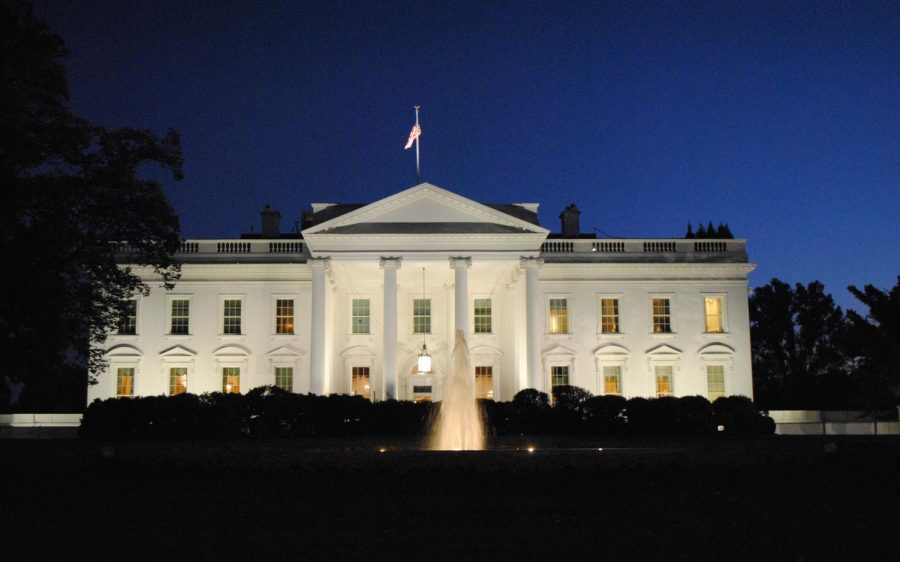The historic list of the American vice presidents is riddled with “forgettable” politicians who have made little or no contribution to United States history other than taking up space on dusty pages that are not much of scholarly interest.
Consider such names as Hannibal Hamlin, Charles Warren Fairbanks, Henry Wilson, Charles Curtis, or George Mifflin Dallas.
Schuyler Colfax and Henry Wilson both served as veeps for Ulysses S. Grant. They each were a heartbeat away from moving into the White House. Dallas was vice president for James Polk. Hamlin was the first veep to Abraham Lincoln and sat out the Civil War in safety and relative anonymity from his farm in Maine. Fairbanks warmed the bench for Teddy Roosevelt; Wilson Curtis was Herbert Hoover’s backup; and while being the veep for Thomas Jefferson, the notorious Aaron Burr was indicted for the dueling murder of U.S. Treasury Secretary Alexander Hamilton, as well as being accused of treason.
In 1992, history author Steve Tally penned “Bland Ambition,” a listing of our various veeps, which was a tad less than a best seller. Nonetheless, it was an important tome chronicling the highlights (or lowlights) of the various chief executives in waiting.
 Tally’s book begins with our first veep, John Adams, who backed up George Washington, ending with Dan Quayle, who was the veep for George H.W. Bush, our 41st president.
Tally’s book begins with our first veep, John Adams, who backed up George Washington, ending with Dan Quayle, who was the veep for George H.W. Bush, our 41st president.
Unlike tall and handsome General Washington, Adams wasn’t a very colorful character … quite the opposite. He was short, round, dumpy, peevish, a loudmouth, and a frequent bore. He was not very well liked and saw no redeeming qualities to being vice president.
J. Danforth Quayle wasn’t exactly “Mr. Excitement.” He once was suspected of being a ladies’ man who had an illicit affair, to which his wife reportedly retorted: “Anyone who knows Dan Quayle knows that he’d rather play golf any day than have sex.”
Teddy Roosevelt was William McKinley’s veep. Before assuming the Oval Office upon McKinley’s assassination, the veep attended law school. As No. 2, Teddy was afraid he would not have a great deal to do.
Like Burr and a few others, Lincoln’s veep upon his re-election was Andrew Johnson, who was impeached and barely escaped conviction by one vote. Fairbanks wanted to succeed Teddy Roosevelt and literally wore himself out campaigning for the White House. A group of supporters in the territory of Alaska were so impressed, they named their second-largest city in his honor.
There was a time in the mid-1970s when the name “Millard Fillmore” was the butt of jokes. It was well earned. Despite being somewhat boring, he rose from poverty living in a log cabin to wealth and the White House. Fillmore demonstrated that through methodical industry and a bit of competence, an uninspiring man such as he could make the American dream come true.
Growing into adulthood, Fillmore attended one-room schools and fell in love with a redheaded teacher, Abigail Powers, who later became his wife. In 1823, he was admitted to the New York bar; seven years later he moved his law practice to Buffalo. For eight years, Fillmore was a member of the House of Representatives. In 1848, Fillmore was elected vice president to Zachary Taylor’s presidency. Two years later (July 1850) Taylor died, leaving the White House to Fillmore.
When Fillmore left office, Oxford University offered to give him an honorary degree, which he declined. Fillmore was afraid the students and faculty would ask, “Who is he and what has he done?” He said it would give people ample opportunity to make his name a joke. Ironically Fillmore was certainly prophetic.
America’s fifth Veep was Elbridge Gerry (pronounced with a hard “G”), who served under James Madison from 1813 to 1814. Since that time, his name has lived on throughout the history of the United States. He was the man who brought about the term and tradition of “Gerrymandering,” an oft-times questionable policy of redrawing Congressional boundaries.
Gerry was one of the original signers of the Declaration of Independence and also was one of the delegates to the Constitutional Convention. It was at the Convention that other delegates observed his “slippery” ways. Despite his adherence to party lines, he made it clear that he was against political parties … especially those devoted to democracy.
When John Adams became president, he appointed Gerry, John Marshall and Charles Pickney to represent America in France. Reportedly, Gerry, through some back-channel bargaining, got the French navy to stop raiding American vessels on the high seas. Later, after four tries, Gerry was finally elected governor of Massachusetts. During his first term as governor, Gerry signed a redistricting bill that ultimately gained him the political immortality he has since enjoyed.
Famous last words: “… Where I stand depends on where I sit.” Veep Hubert Humphrey (while under President Lyndon B. Johnson).
Tom Morrow is a longtime Oceanside-based journalist and author.
Columns represent the views of the individual writer and do not necessarily reflect those of the North Coast Current’s ownership or management.






